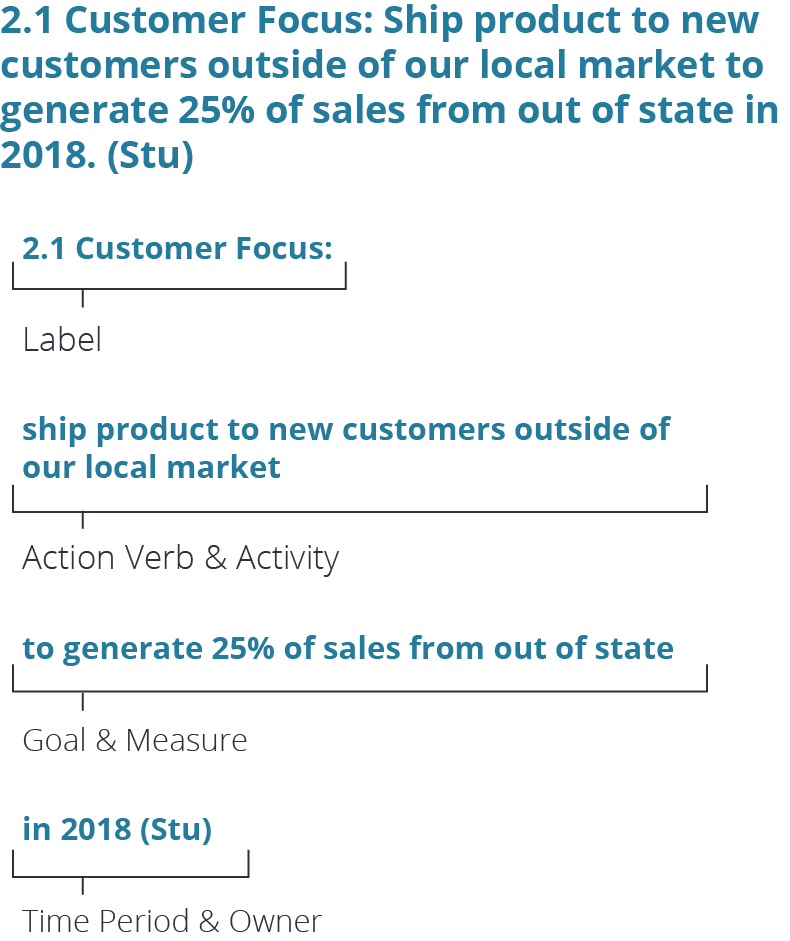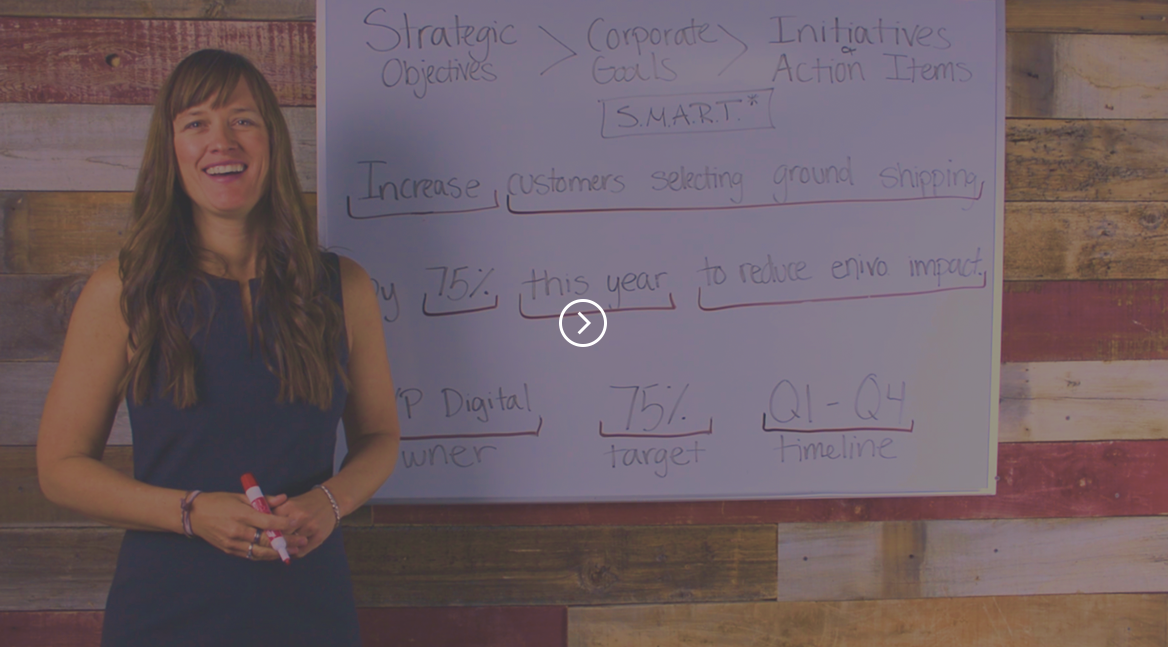One of the most frequent questions we’re asked is how to create strategic objectives and the aligned annual goals that serve as the backbone to an organization’s strategic plan. Not to over-simplify the process, we’ve created a quick breakdown on how to develop strategic objectives and aligned goals as an introduction to the process.
Strategic Objectives: Develop a Holistic Framework
Strategic objectives create the framework of your plan. Everything will cascade from these statements – think of them as almost mini vision statements for each area of your organization. We have an exercise here to help you develop your vision statements and vision descriptors that help build your strategic objectives and plan framework!
Don’t know what your strategic objectives should be? Strategic objectives are long-term, broad, continuous statements with a 3- to 5-year horizon and address the core functional areas of your organization and may include perspectives including financial, customer, operational processes, and staff development. Strategic objectives serve as a framework supporting your organization’s strategic plan.
Here are a few guiding questions you can use to help build your strategic objectives and plan framework:
- Financial Perspective: What are our shareholders’ or stakeholders’ expectations for our financial performance or social outcomes?
- Customer Perspective: To reach our outcomes, what value must we provide to our customers? What is our value proposition?
- Operations Perspective: To provide value, what process must we excel at to deliver our products and services?
- People Perspective: To drive our processes, what skills, capabilities and organizational structure must we have?
Need more help? Check out our post on developing the different types of strategic objectives here.

Anatomy of a Strategic Objective

Build Your Framework
Use your strategic objectives to develop your plan’s framework. It’s important to remember your plan framework should consist of 4-6 holistic strategic objectives. Less than 4 objectives creates an incomplete plan. More than 6 objectives creates a plan that’s un-executable.
Here is an example:

Cascading to Create Annual Aligned Goals
Once you have created your strategic objectives, you’ll need to create the aligned annual goals that clearly communicate to your organization what you need to accomplish in the next year to help achieve your long-term objective.
To get started, create a list of results you’d like to see in the next year related to each of your strategic objectives. They might look something like:
- 150K in unrestricted grants and $1M total funding
- Always have at least 90 days of cash on hand
- 25% of sales from outside of California and 15% growth in California
- Quality control process for our services
- Meaningful employee recognition program in place
- All departments know the “customer” they serve
The most important thing to remember here is these are the goals that are the most important right now to reach our long-term objectives.
Writing a Goal You Can Execute
We could go on and on about SMART goals but what you need to know is simple — If you want something to get done, you need to be clear about what you want done, who is going to do it, and when it needs to be done by. Here’s what it looks like in practice:


Putting it All Together
Once you’ve created your long-term objectives and created annual goals aligned to those objectives, you can create the plan framework that serves as the backbone of your strategic plan. These long-term objectives supported by your annual goals can serve as the starting point for your individual team members to begin creating short-term goals that support your plan’s annual goals. It will look something like this:












